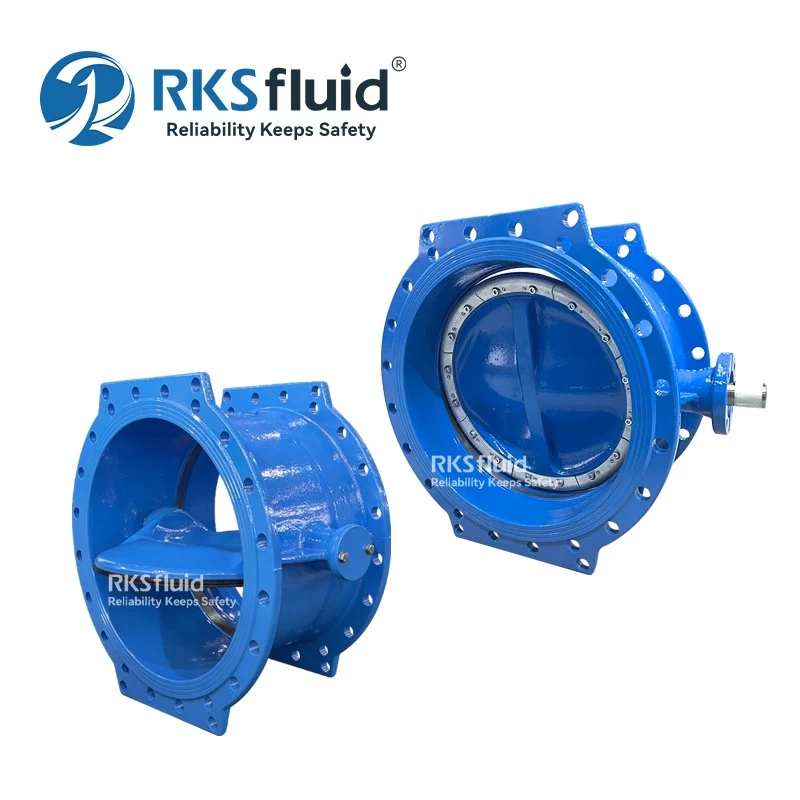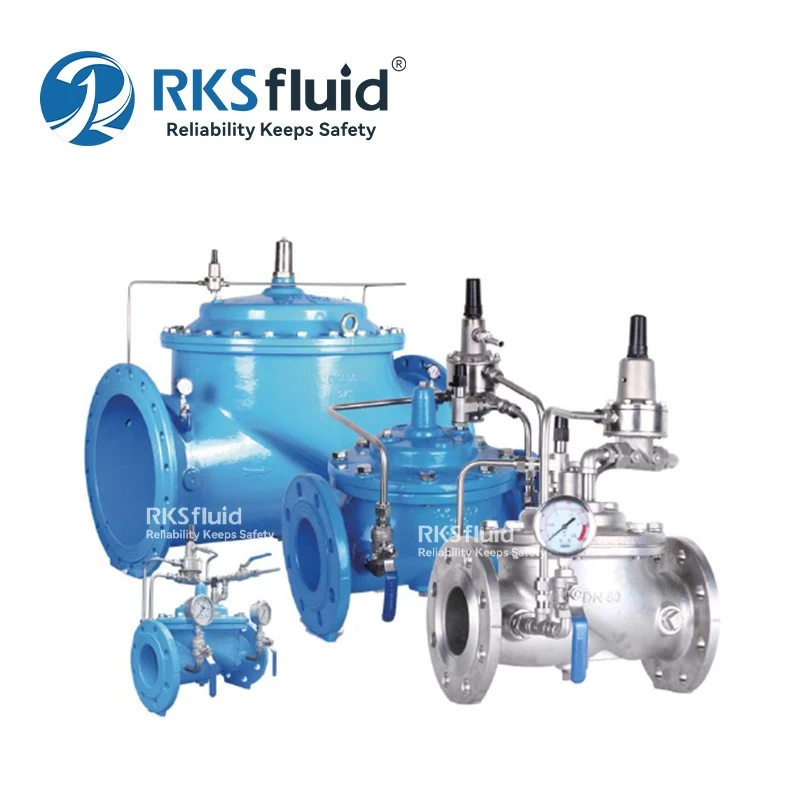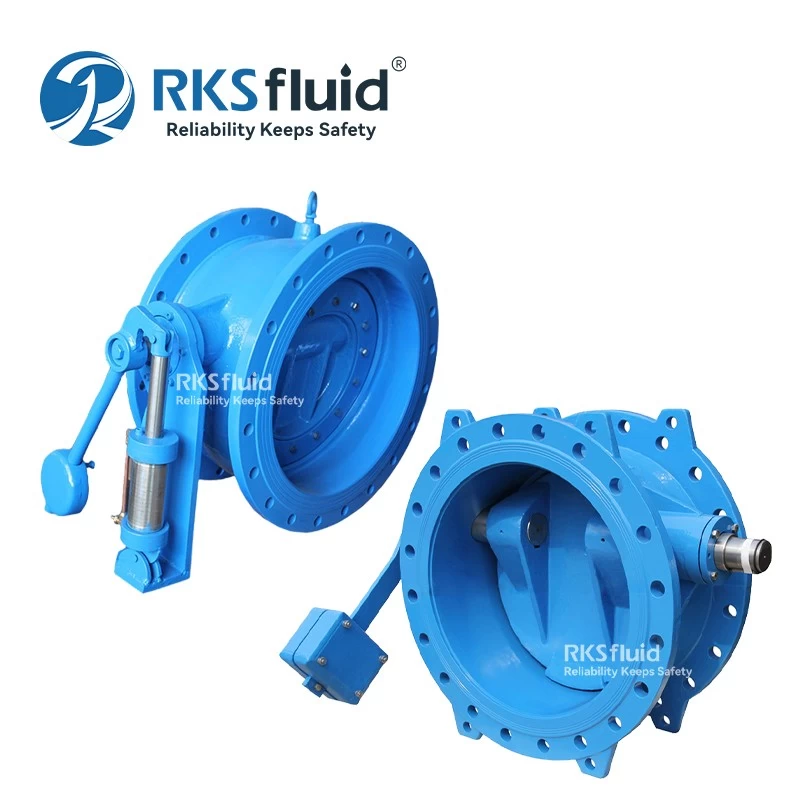- Main Product
- Contact Us
-
RKSfluid Flow Control Company
Web: www.rksfluid.com
Tel: +86 24 2318 0188
Fax: +86 24 2318 0788
Mail: info@rksfluid.com Contact Now
- Subscribe
-
Get email updates on new products
News
Valve selection
Cassie
2019-06-06 12:04:33
Valve selection
1. What are the three main factors that should be considered when choosing an implementing agency?
(1) The output of the actuator is greater than the load of the valve and is reasonably matched.
(2) When checking the standard combination, it is necessary to consider whether the allowable pressure difference specified by the valve meets the process requirements. When the pressure difference is large, the imbalance force of the spool is calculated.
(3) It is necessary to consider whether the response speed of the actuator meets the requirements of the process operation, especially the electric actuator.
2. compared with pneumatic actuators, what are the characteristics of electric actuators, and what are the output forms?
The electric drive source is simple and convenient for electric power, with large thrust and torque, and high rigidity. However, the structure is complicated and the reliability is poor. It is more expensive than pneumatics in small and medium sizes. It is often used in applications where there is no gas source or no strict explosion-proof or flameproof.
The electric actuator has three output forms: angular stroke, straight stroke, and multi-turn.
3. why is the cut-off pressure difference of the angular stroke type valve larger?
The cut-off pressure difference of the angular stroke type valve is large because the resultant force of the medium on the valve core or the valve plate generates a very small torque to the rotating shaft, and therefore, it can withstand a large pressure difference.
Butterfly valves, ball valves are the most common angular stroke valves.
The electric drive source is simple and convenient for electric power, with large thrust and torque, and high rigidity. However, the structure is complicated and the reliability is poor. It is more expensive than pneumatics in small and medium sizes. It is often used in applications where there is no gas source or no strict explosion-proof or flameproof.
The electric actuator has three output forms: angular stroke, straight stroke, and multi-turn.
3. why is the cut-off pressure difference of the angular stroke type valve larger?
The cut-off pressure difference of the angular stroke type valve is large because the resultant force of the medium on the valve core or the valve plate generates a very small torque to the rotating shaft, and therefore, it can withstand a large pressure difference.
Butterfly valves, ball valves are the most common angular stroke valves.
4. Which valves need to be selected for flow? how to choose?
Single-sealed regulator valves such as single-seat valves, high-pressure valves, and single-sealed sleeve valves without balance holes require flow direction selection.There are advantages and disadvantages to opening and closing. The flow-opening valve works stably, but the self-cleaning performance and the sealing performance are poor, and the service life is short; the flow-closed valve has a long service life, self-cleaning performance and good sealing performance, but the stability is poor when the valve stem diameter is smaller than the spool diameter. .Single-seat valves, small-flow valves, and single-seal sleeve valves are usually selected for flow-opening. When flushing is strong or self-cleaning is required, flow closure is optional. The two-position quick-opening characteristic regulating valve is selected for flow closing type.
5. What other valves with adjustment function besides single, double seat and sleeve valves?
Diaphragm valve, butterfly valve, O-type ball valve (mainly cut), V-type ball valve (large adjustment ratio, shearing action), eccentric rotary valve are all regulating valves.
6. Why is selection more important than calculation?
Compared with the selection, the selection is much more important and more complicated. Because the calculation is just a simple formula calculation, it is not in itself the accuracy of the formula, but whether the given process parameters are accurate.
There are many contents involved in the selection. If you are not careful, it will lead to improper selection, which not only causes waste of manpower, material resources and financial resources, but also has unsatisfactory effect on use, which brings about some use problems such as reliability, longevity and operation. Quality and so on.
Diaphragm valve, butterfly valve, O-type ball valve (mainly cut), V-type ball valve (large adjustment ratio, shearing action), eccentric rotary valve are all regulating valves.
6. Why is selection more important than calculation?
Compared with the selection, the selection is much more important and more complicated. Because the calculation is just a simple formula calculation, it is not in itself the accuracy of the formula, but whether the given process parameters are accurate.
There are many contents involved in the selection. If you are not careful, it will lead to improper selection, which not only causes waste of manpower, material resources and financial resources, but also has unsatisfactory effect on use, which brings about some use problems such as reliability, longevity and operation. Quality and so on.
7. Why can't a double seal valve be used as a shut-off valve?
The advantage of the two-seat valve spool is the force-balanced structure, which allows a large differential pressure, and its outstanding disadvantage is that the two sealing faces cannot be in good contact at the same time, resulting in a large leak.If it is artificially and forcibly used to cut off the occasion, it is obviously not effective, even if it has made many improvements (such as double-sealed sleeve valves), it is not advisable.
8. Why does the double seat valve easily oscillate when working at a small opening?
For a single core, the valve stability is good when the medium is flow-opening; the stability of the valve is poor when the medium is flow-closed. The double seat valve has two spools, the lower spool is closed, and the upper spool is open.Thus, when working at a small opening degree, the flow-closed spool tends to cause vibration of the valve, which is why the double-seat valve cannot be used for small opening work.
9. What are the characteristics of the straight-through single-seat control valve? Where is the application?
(1) The discharge flow is small, because only one spool is easy to seal. The standard discharge flow is 0.01% KV and is further designed as a shut-off valve.
(2) The allowable pressure difference is small, because the unbalanced force is large. The valve ΔP of DN100 is only 120KPa.
(3) The circulation capacity is small. The KV of the DN100 is only 120. It is often used in applications where the amount of leakage is small and the pressure difference is not large.
10. What are the characteristics of the straight-through two-seat control valve? Where is the application?
(1) The allowable pressure difference is large because it can offset many imbalance forces. The valve ΔP of DN100 is 280 KPa.
(2) Large circulation capacity. The KV of the DN100 is 160.
(3) The amount of leakage is large because two spools cannot be sealed at the same time. The standard discharge is 0.1% KV, which is a multiple of 10 for a single seat valve. The straight-through two-seat control valve is mainly used in applications where the high pressure difference is not critical and the leakage is not critical.
11. Why is the anti-blocking performance of the straight stroke regulating valve poor, and the anti-blocking performance of the angular stroke valve is good?
The straight-stroke valve spool is vertically throttled, and the medium flows horizontally in and out, and the flow passage in the valve chamber is inevitably turned and inverted, making the flow path of the valve quite complicated (the shape is inverted "S" type). Thus, there are many dead zones that provide space for the precipitation of the medium, which in the long run causes blockages.The direction of the angular stroke valve throttling is the horizontal direction. The medium flows horizontally and horizontally, which makes it easy to take away the dirty medium. At the same time, the flow path is simple, and the space for the medium to precipitate is also small, so the anti-blocking performance of the angular stroke valve is good.
12. Under what circumstances do you need to use a valve positioner?
(1) Where the friction is large and precise positioning is required. For example, high temperature, low temperature regulating valves or regulating valves using flexible graphite packing.
(2) The slow process needs to increase the response speed of the regulating valve. For example, adjustment systems for parameters such as temperature, liquid level, and analysis.
(3) It is necessary to increase the output force and cutting force of the actuator. For example, a single seat valve with DN ≥ 25 and a double seat valve with DN > 100. When the pressure drop across the valve is ΔP>1MPa or the inlet pressure P1>10MPa.
(3) It is necessary to increase the output force and cutting force of the actuator. For example, a single seat valve with DN ≥ 25 and a double seat valve with DN > 100. When the pressure drop across the valve is ΔP>1MPa or the inlet pressure P1>10MPa.
(4) In the case of the split-range adjustment system and the regulating valve operation, it is sometimes necessary to change the gas opening and gas-closing forms.
(5) Where it is necessary to change the flow characteristics of the regulating valve.
13. What are the seven steps to determine the valve diameter?
(1) Determine the calculated flow rate - Qmax, Qmin
(2) Determine the calculated pressure difference - select the resistance ratio S value according to the characteristics of the system, and then determine the calculation (valve full open
(3) pressure difference.
(4) Calculate the flow coefficient - select the appropriate calculation formula chart or software to find the max and min of KV.
(5) KV value selection - according to the KV max value in the selected product series closest to the first gear KV, get the primary diameter.
(6) Checking the opening degree - 90% valve opening when Qmax is required; 10% valve opening when Qmin.
(7) Actual adjustable ratio check - general requirements should be 10; R actual > R requirements
(8) Determination of caliber - if unqualified re-election, select KV value, and then verify.
14. Why did the sleeve valve replace the single and double seat valves but did not get what?
The sleeve valve that was introduced in the 1960s was widely used at home and abroad in the 1970s. The proportion of the sleeve valve in the petrochemical plant introduced in the 1980s was large. At that time, many people thought that the sleeve valve could replace single and double. The seat valve has become the second generation product.This is not the case today, single-seat valves, double-seat valves, and sleeve valves are equally used. This is because the sleeve valve only improves the throttling form, stability and maintenance better than the single seat valve, but its weight, anti-blocking and leakage indicators are consistent with single and double seat valves. How can it replace single and double seat valves? What? Therefore, they can only be used together.
15. Why should the cutting valve be as hard as possible?
The shut-off valve requires that the leakage is as low as possible, the leakage of the soft-sealed valve is the lowest, and the cutting effect is of course good, but it is not wear-resistant and has poor reliability. From the double standard of small leakage, sealed and reliable, the soft seal cut is not as good as the hard seal cut. Such as full-featured ultra-light regulating valve, sealed and protected by wear-resistant alloy, high reliability, leakage rate of 10 to 7, has been able to meet the requirements of the shut-off valve.
The shut-off valve requires that the leakage is as low as possible, the leakage of the soft-sealed valve is the lowest, and the cutting effect is of course good, but it is not wear-resistant and has poor reliability. From the double standard of small leakage, sealed and reliable, the soft seal cut is not as good as the hard seal cut. Such as full-featured ultra-light regulating valve, sealed and protected by wear-resistant alloy, high reliability, leakage rate of 10 to 7, has been able to meet the requirements of the shut-off valve.
16. Why is the valve stem of the straight stroke control valve thinner?
It involves a simple mechanical principle: large sliding friction and low rolling friction. The valve stem of the straight stroke valve moves up and down, and the packing is slightly pressed tightly, which will tightly seal the valve stem and produce a large backlash. For this reason, the valve stem is designed to be very small, and the filler is also commonly used with a small friction coefficient of tetrafluorofiller to reduce the backlash, but the problem is that the valve stem is thin, the bend is easy, and the filler life is short.
The best way to solve this problem is to use the travel valve stem, that is, the angular stroke type regulating valve. Its valve stem is 2 to 3 times thicker than the straight stroke valve stem, and the graphite packing with long life is selected. Well, the filler has a long service life, and the friction torque is small and the backlash is small.
It involves a simple mechanical principle: large sliding friction and low rolling friction. The valve stem of the straight stroke valve moves up and down, and the packing is slightly pressed tightly, which will tightly seal the valve stem and produce a large backlash. For this reason, the valve stem is designed to be very small, and the filler is also commonly used with a small friction coefficient of tetrafluorofiller to reduce the backlash, but the problem is that the valve stem is thin, the bend is easy, and the filler life is short.
The best way to solve this problem is to use the travel valve stem, that is, the angular stroke type regulating valve. Its valve stem is 2 to 3 times thicker than the straight stroke valve stem, and the graphite packing with long life is selected. Well, the filler has a long service life, and the friction torque is small and the backlash is small.











